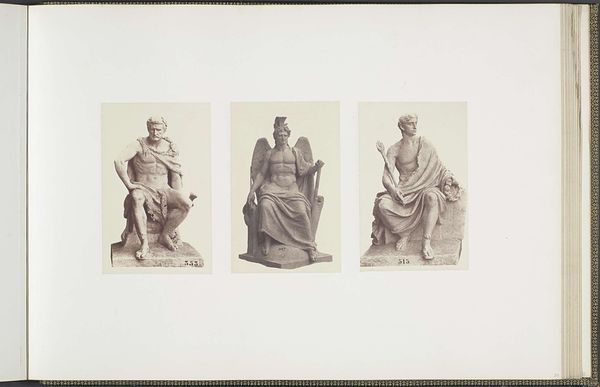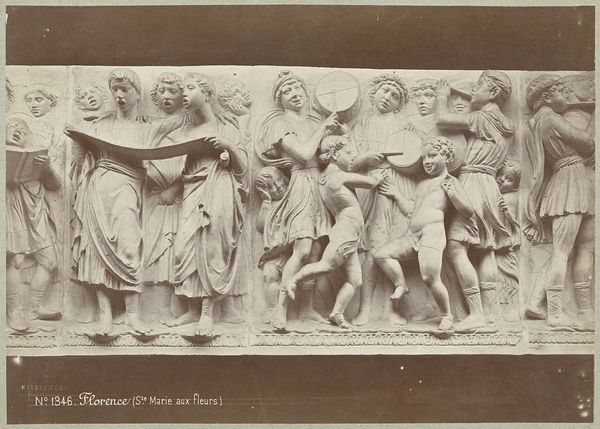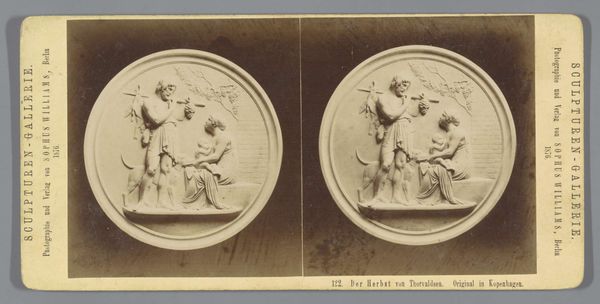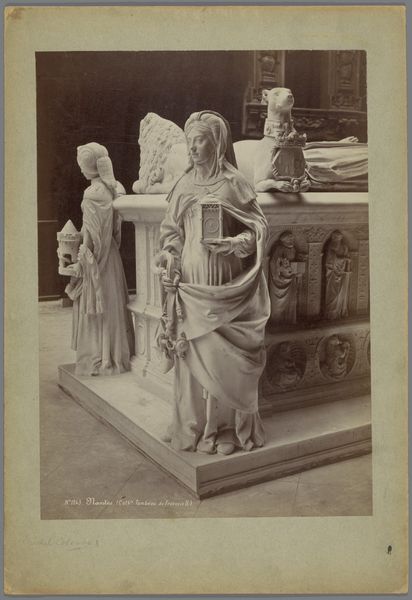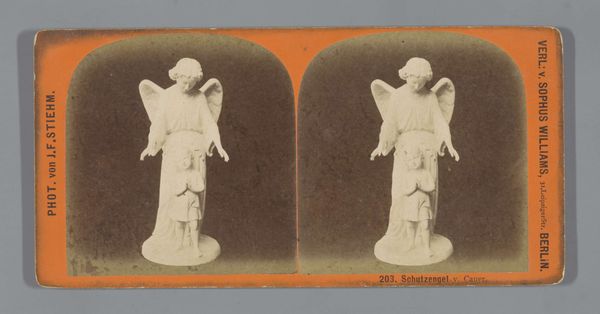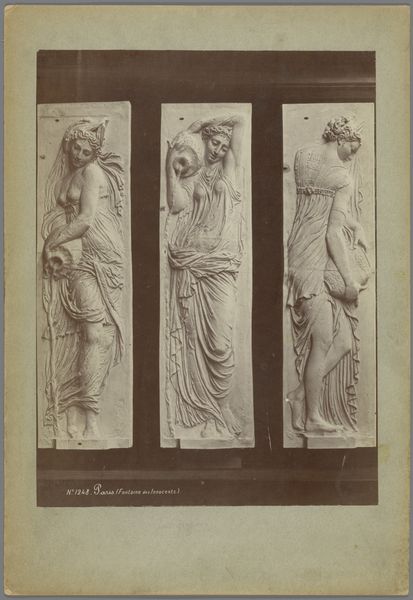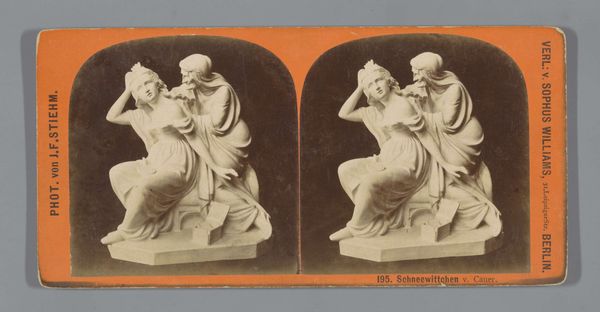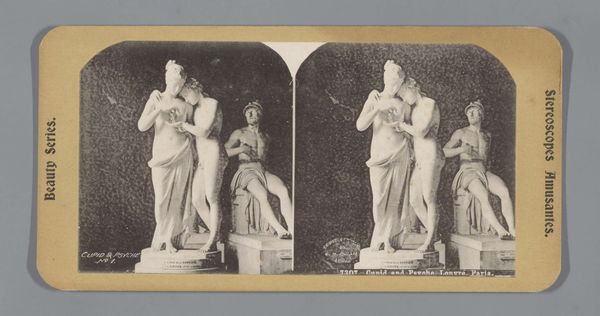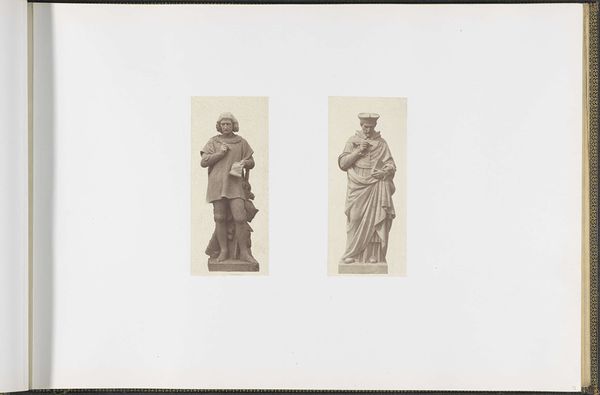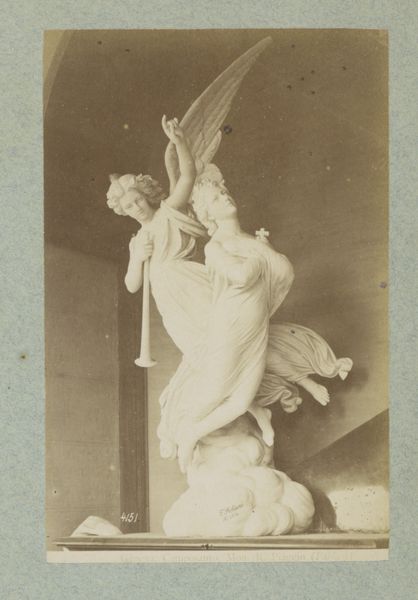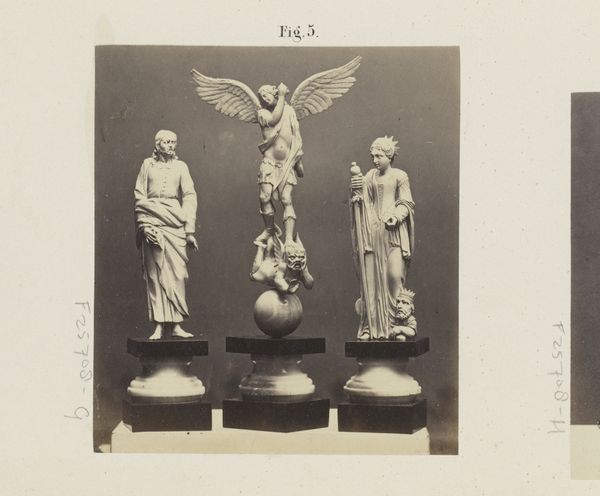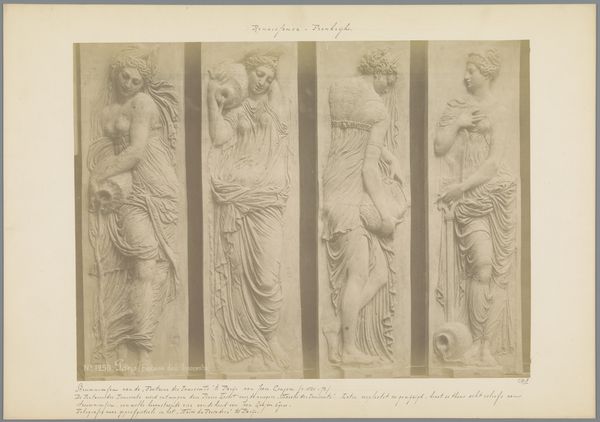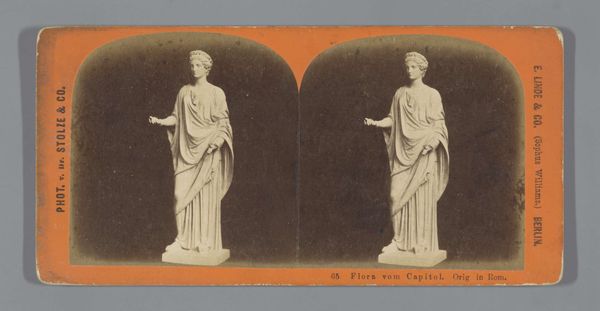
photography, sculpture
#
portrait
#
figuration
#
photography
#
coloured pencil
#
sculpture
#
history-painting
Dimensions: height 85 mm, width 176 mm
Copyright: Rijks Museum: Open Domain
Curator: Here we have an interesting photographic print capturing a sculpture dating from 1876, identified as "Sculpture of Crusader Tancred with Clorinde and Horse". It was photographed and published by Sophus Williams in Berlin. Editor: The photograph, even in its monochromatic representation, feels incredibly static and posed. The textures seem almost flattened, robbing the marble, or whatever the sculpture’s actual material is, of its inherent dynamism. Curator: I think that reading reveals certain symbolic nuances that resonate across time. Clorinda, often seen as representing conflicted loyalties and forbidden love, juxtaposed against the idealized crusader Tancred – figures from Tasso's epic poem Gerusalemme Liberata. The pairing represents duty against passion, and a culture clash portrayed through their physical relationship. Editor: Interesting! Though I’m equally drawn to the socio-economic aspects of the production and reception. Consider the materiality itself – presumably marble, the quarrying, the transportation to Berlin. Curator: And don't forget, the act of photographing this sculpture for distribution introduces layers of mediation. It’s not just about observing a sculpture. Sophus Williams here captures a sculptural form and markets it. Editor: Right! This would democratize access to artworks previously confined to elites who commission or could afford original sculptures, and raises the issue of mechanical reproduction and cultural authority. Curator: It suggests a shifting terrain of how cultural narratives and historical moments are consumed and perpetuated among broader audiences. Editor: I also find the way light is rendered in the photograph…flat. The labor of replicating and circulating imagery shifts toward reproducibility and availability – art consumed and circulated at scale. It changes art. Curator: The image evokes the romanticism of a bygone era and it serves as a potent reminder of how artists like Williams contribute to our cultural memory. It offers us access to idealized narratives about virtue and conflict. Editor: Looking at how a society values the creation and distribution of images and how this intersects with artistic value helps to better ground abstract ideas about social forces and economic systems. Curator: The image encapsulates themes about duty, conflict, and beauty that stay relevant through shifting times. It truly invites further interpretation! Editor: And it underlines, importantly, that consumption of an artwork is still another moment of creation, especially if mass production enters the field. The artist doesn't 'own' this meaning as much anymore.
Comments
No comments
Be the first to comment and join the conversation on the ultimate creative platform.
